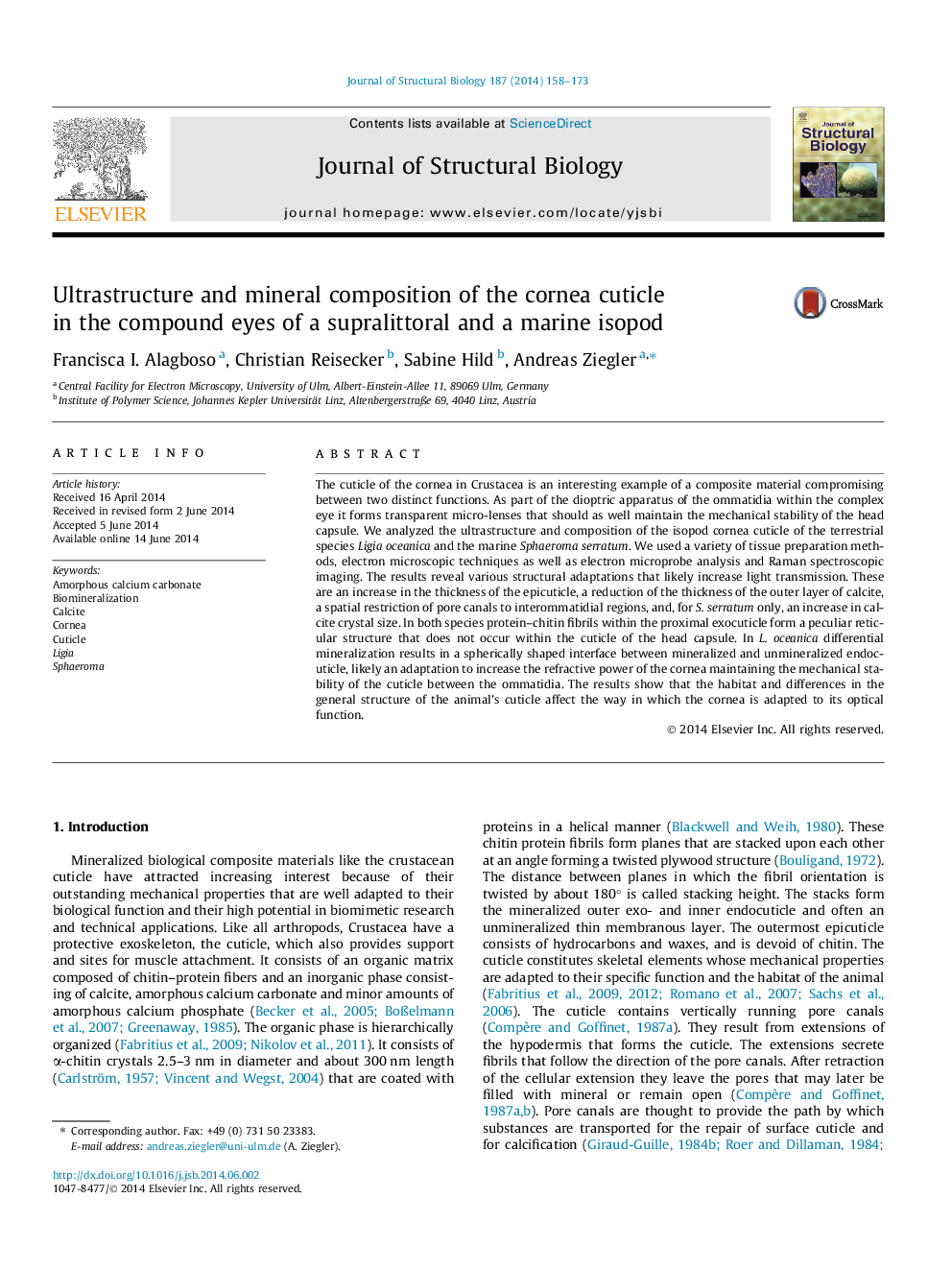| Article ID | Journal | Published Year | Pages | File Type |
|---|---|---|---|---|
| 5914311 | Journal of Structural Biology | 2014 | 16 Pages |
The cuticle of the cornea in Crustacea is an interesting example of a composite material compromising between two distinct functions. As part of the dioptric apparatus of the ommatidia within the complex eye it forms transparent micro-lenses that should as well maintain the mechanical stability of the head capsule. We analyzed the ultrastructure and composition of the isopod cornea cuticle of the terrestrial species Ligia oceanica and the marine Sphaeroma serratum. We used a variety of tissue preparation methods, electron microscopic techniques as well as electron microprobe analysis and Raman spectroscopic imaging. The results reveal various structural adaptations that likely increase light transmission. These are an increase in the thickness of the epicuticle, a reduction of the thickness of the outer layer of calcite, a spatial restriction of pore canals to interommatidial regions, and, for S. serratum only, an increase in calcite crystal size. In both species protein-chitin fibrils within the proximal exocuticle form a peculiar reticular structure that does not occur within the cuticle of the head capsule. In L. oceanica differential mineralization results in a spherically shaped interface between mineralized and unmineralized endocuticle, likely an adaptation to increase the refractive power of the cornea maintaining the mechanical stability of the cuticle between the ommatidia. The results show that the habitat and differences in the general structure of the animal's cuticle affect the way in which the cornea is adapted to its optical function.
